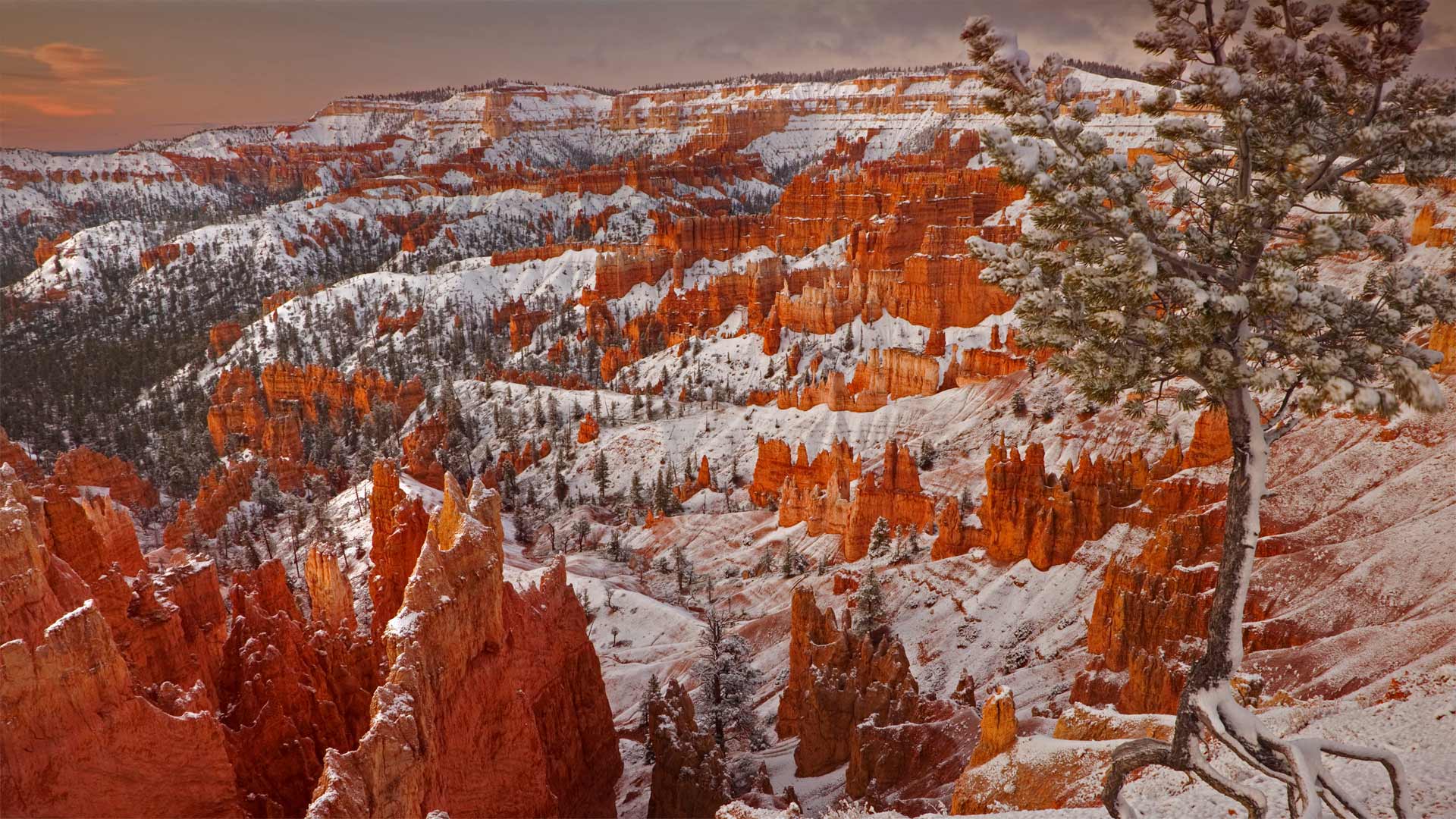布莱斯峡谷国家公园的冬天,犹他州 Winter in Bryce Canyon National Park, Utah (© Don Paulson/Danita Delimont)

布莱斯峡谷国家公园的冬天,犹他州 Winter in Bryce Canyon National Park, Utah (© Don Paulson/Danita Delimont)
Winter in the Wild West
When considering the dramatically eroded canyons of southwestern Utah, snow may not be the first thing that comes to mind. But far-flung Bryce Canyon National Park gets plenty of the white stuff, owing to its elevation of 8,000-plus feet at the massive amphitheater's rim. The cold not only provides scenic snowy views and great cross-country skiing, it's responsible for the striking red-rock pinnacles—known as hoodoos—that make the park so unique.
High above sea level, winter in Bryce Canyon often sees daily shifts between freezing and above-freezing temperatures. Despite its name, Bryce Canyon isn't a true canyon, but is instead a collection of natural amphitheaters. The park's hoodoos formed as water seeped into massive stone plateaus, then froze and expanded to break away chunks of rock. Repeated day after day for eons, this process has left slim sections of sediment standing throughout Bryce Canyon—now the largest concentration of hoodoos in the world.
狂野西部的冬天
在说到犹他州西南部峡谷为什么受侵蚀严重时,降雪可能并不是第一个被想到的原因。 但是遥远的布莱斯峡谷国家公园(Bryce Canyon National Park)由于在大型圆形剧场的边缘海拔超过8,000英尺而获得了很多白色的东西。 寒冷不仅带来优美的雪景和越野滑雪,而且还造成了令人惊叹的红岩峰(称为石林),使公园如此独特。
布莱斯峡谷的冬天海拔很高,每天都会出现冰点和冰点以上温度的变化。尽管它的名字包含峡谷,但布莱斯峡谷不是一个真正的峡谷,而是一个自然露天剧场的集合。公园的石林随着水渗入巨大的石制高原而形成,然后冻结并扩大以分裂成块的岩石。 这一过程日复一日地重复了亿万年,留下了遍布布莱斯峡谷的薄薄的沉积物,现在布莱斯峡谷是世界上最大的石林聚集地。
评论已关闭